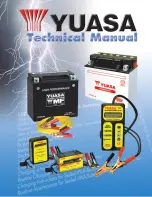
Tires
We recommend that you visually
check your tires every day and
use a gauge to measure the air
pressure at least once a month.
If you think a tire might be low,
check it immediately. Remember
to check the spare tire at the
same time you check all the other
tires.
Check the pressure in the tires
when they are cold. This means
the car has been parked for at
least three hours. If you have to
drive the car before checking the
tire pressure, the tires can still be
considered "cold" if you drive less
than one mile (1.6 km).
If you check the pressure when
the tires are hot (the car has been
driven several miles), you will see
readings four to six PSI higher
than the cold reading. This is
normal. Do not let air out to
match the specified cold
pressure. The tire will be
underinflated.
Recommended Tire Pressures
for Normal Driving
The following chart shows the
recommended cold tire pressures
for most normal driving
conditions and speeds. Tire
pressures for high speed driving
are shown on page
203
.
These pressures are also given on
the tire information label on the
driver's doorjamb.
You should get your own tire
pressure gauge and use it
whenever you check your tire
pressures. This will make it easier
for you to tell if a pressure loss is
due to a tire problem and not due
to a variation between gauges.
Maintenance
TIRE INFORMATION LABEL
















































